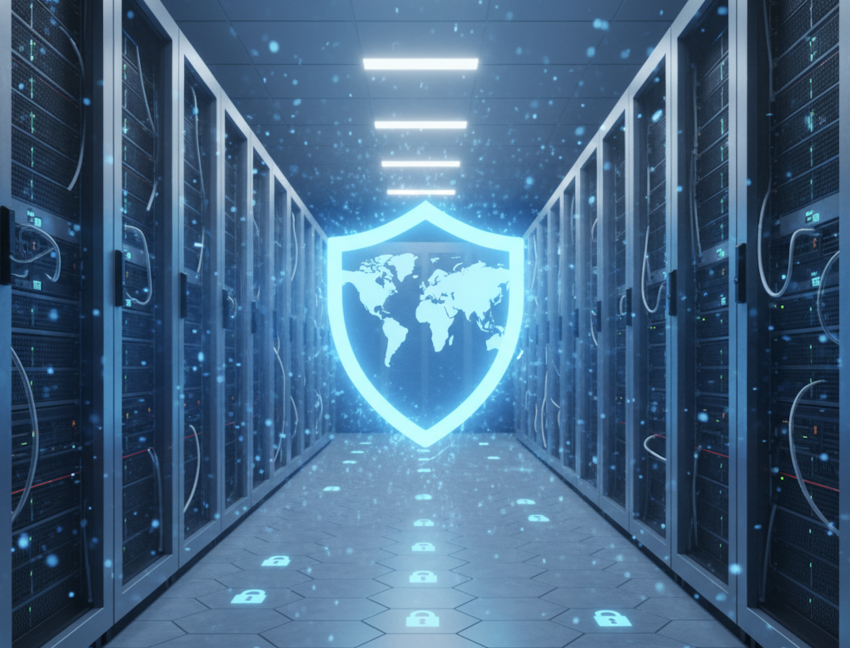When the AWS outage hit on Monday, a huge chunk of the web went belly up. Major platforms slowed or went dark – social feeds, online stores, even connected home devices. A single cloud region in Northern Virginia stumbled, and the tremor spread from San Francisco to Singapore.
It wasn’t the first outage of its kind. And it won’t be the last. The world’s digital backbone, meant to be built for redundancy, revealed just how entangled and consolidated it has become. Thousands of businesses suddenly discovered that what they call “the hyperscaler safety” resolves to a few data centers operated by a few providers. When one of them falters, a surprising portion of their operations goes with it.
For users, it was a brief annoyance. For engineers, a long night. For everyone else, it was a reminder: the convenience of scale and the promise of infinite uptime still have a very human vulnerability beneath them.
The Technical Reality of What Happened
Northern Virginia is the home to the world’s densest concentration of cloud infrastructure. A routine network monitoring update in one of the data centers there cascaded into a wider failure, knocking out routing inside a major hyperscale environment. The issue spread through dependent services, from DNS resolution to database queries, until applications across continents began to time out. More than 141 AWS services were affected. Downdetector logged more than 4 million users impacted across dozens of services.
Engineers traced the fault to an internal subsystem that oversees load balancers – the unseen plumbing that keeps modern applications reachable. Once it failed, so did the confidence that regional redundancy would be enough. For hours, automated recovery systems and manual interventions wrestled the platform back online.
A Fragility Hidden in Plain Sight
The outage did more than interrupt services; it exposed an assumption. Somewhere along the way, “the public cloud” stopped meaning distributed and started meaning dependent. What began as an architecture designed for resilience has, through efficiency and convenience, become increasingly centralized and, therefore, weak.
According to the Guardian, more than 2,000 companies worldwide have been affected, with 8.1 million user reports of problems from users, including 1.9 million in the US.
For decades, the Internet’s strength came from its fragmentation – millions of systems loosely connected, no single point of failure. Today, much of that resilience has been traded for what’s quicker and easier.
It’s not so much a flaw in technology as in philosophy. We built for scale, not organizational autonomy. And while global platforms now deliver astonishing capability, they also concentrate risk in places users can’t see and engineers can’t easily reach.
The Broader Insight
Resilience has never been a product feature but rather an architectural choice. Redundancy, distribution, isolation, and control don’t happen by default – they have to be designed in, layer by layer.
Every organization that runs online lives somewhere along the same spectrum: from convenience to safety. The more we shove workloads into one ecosystem, the more invisible that fragility becomes – until an event like this makes it visible again.
At Advanced Hosting, we’ve long believed that reliability doesn’t come from faith in one platform, but from the freedom to move beyond it. Building on diverse infrastructure, separating critical workloads, and maintaining sovereignty over data and performance aren’t just cost or compliance decisions. They’re what keep the Internet breathing when one cloud holds its breath.
The Lesson Endures
This week’s disruption will fade from headlines. Systems will be patched, dashboards will turn green again, and the Internet will hum as if nothing happened. But under the surface, the lesson remains: our digital world is only as fault-tolerant as the diversity of its foundations.
Outages are inevitable. Being tied to a single provider is optional. The companies that will stand unshaken in the next disruption are those that build for choice – multiple providers, independent control, and infrastructure that can adapt when the unexpected happens.
